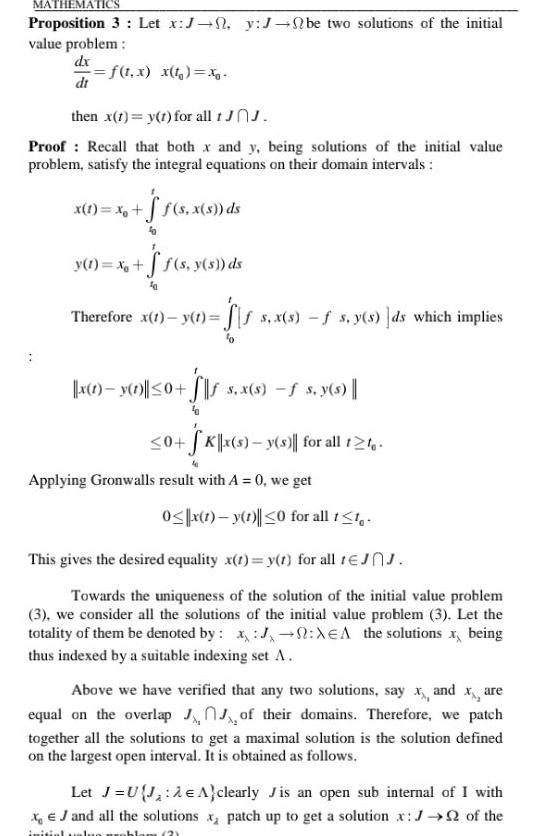MATHEMATICS Proposition 3 Let x J n y J be two solutions of
Last updated: 9/21/2023

MATHEMATICS Proposition 3 Let x J n y J be two solutions of the initial value problem dx f t x x t x dt then x 1 y 1 for all tJnJ Proof Recall that both x and y being solutions of the initial value problem satisfy the integral equations on their domain intervals x 1 x f s x s ds y 1 x f s y s ds Therefore x 1 y t ffs x s f s y s ds which implies x 1 y 1 0 s x s f s y s 0 SK x s y s for all 12 Applying Gronwalls result with A 0 we get 0 x 1 y 1 0 for all 1 1 This gives the desired equality x t y t for all tJJ Towards the uniqueness of the solution of the initial value problem 3 we consider all the solutions of the initial value problem 3 Let the totality of them be denoted by J XEA the solutions x being thus indexed by a suitable indexing set A Above we have verified that any two solutions say x and x are equal on the overlap of their domains Therefore we patch together all the solutions to get a maximal solution is the solution defined on the largest open interval It is obtained as follows Let J U J A clearly Jis an open sub internal of I with x J and all the solutions x patch up to get a solution x J of the initial value problem